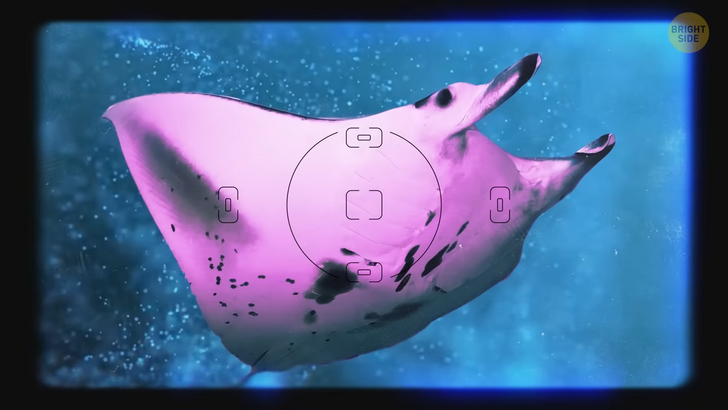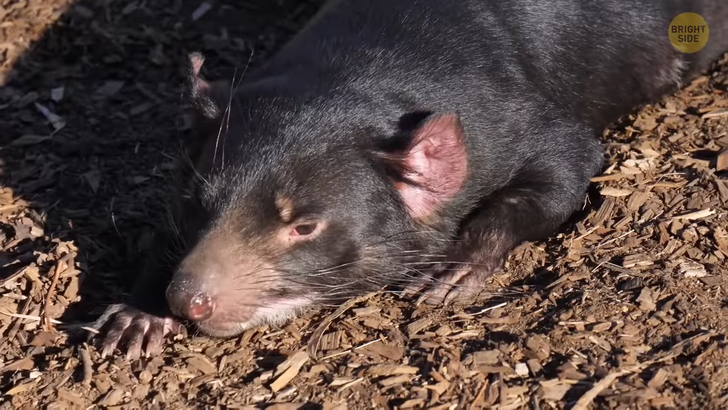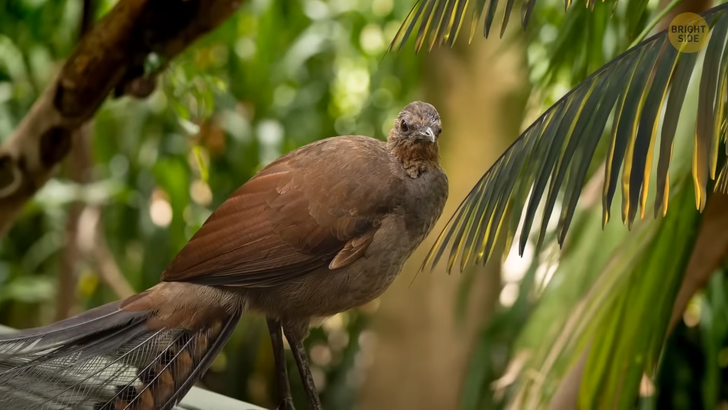14 Times Employees Handled Toxic Jobs Like Absolute Pros


It was a regular dive in Australia’s Great Barrier Reef for underwater photographer Kristian Laine. He was taking photos of a group of male manta rays chasing a female one when suddenly he saw something that made him check if his camera strobes had been broken. There was a pink manta ray in his viewfinder!

Other underwater beauties of its kind are usually black on top and white underneath. The creature Kristian met that day was black on top and pink on the bottom. It turned out the photographer met Inspector Clouseau, the only known pink manta ray in the world living in the waters around Lady Elliot Island. It was named after the famous detective from Pink Panther movies. It was calm, looking at the photographer with its huge eyes. It even seemed that it was smiling at his guest, as Kristian remembered in an interview.
He managed to take 5 good photos of Inspector Clouseau in the 30 minutes they spent together. Divers first spotted the unique manta ray in 2015, and it was only seen less than ten times ever since. First, the scientists thought the secret to this unusual color was in its diet. They took a sample of its skin and found out it was actually a result of a genetic mutation that caused it to express melanin differently. Many fish have it, but it usually turns them into albinos.
For a regular sea creature, a combo of black, which blends with dark waters and can’t be seen from above, and white, which blends with light, is ideal protection. A color mutation with pink in the picture would make other sea animals more vulnerable to predators. But a manta ray weighing as much as a car and 1.5 times taller than an average basketball player definitely has nothing to be afraid of. These creatures are born rather big and grow fast in the first few years, so they can defend themselves.

If you were impressed by a manta ray the shade of bubble gum, meet blue bees! These unique Australian inhabitants have turquoise stripes instead of yellow, which makes them look like flying sapphires. Their thin brown wings look like layers of cellophane with engraved patterns. Another unusual thing about them is their lifestyle: the blue-banded bees are singles. They don’t move in swarms and don’t live in large nests.
They prefer settling in small burrows in the soil or crevices in rocks. Blue bees also have a special way of pollination. They sit on the flower, hold it tightly, and shake the whole body to make the flower move quickly and gently. Then, the bees stop and collect all the pollen that goes out of the capsule inside the flower. Blue bees work for Australian agriculture, helping with tomatoes, cranberries, eggplants, blueberries, kiwi, and chili peppers.
The next unique Australian animal is called the happiest on this planet. A quokka never stops smiling and looks like a live teddy bear. It’s a nocturnal creature the size of a cat. It has inherited its appearance from its relative — the kangaroo. It also has a pouch, which serves as a home for its offspring for 6 months.
Quokkas have a diet of grass, shrubs, and leaves. When there isn’t enough food, they can use stored fat in their tails as a source of energy. They mostly live on Rottnest Island off the coast of Western Australia. Since there are no predators or traffic there, quokkas have nothing to fear and gladly come into contact with humans. It’s against the law to touch them, but no one has banned taking selfies.

When you look into the eyes of this cutie pie, the only question is: who on Earth would call it the Tasmanian devil? Well, it wasn’t that friendly to the European settlers who came to Tasmania in the early 19th century. The cutie pie greeted them with frightening growls, high-pitched screeches, and unearthly screams. They had no more doubts about how to name it when they saw its red ears and extra white jaws with sharp teeth.
But when it doesn’t have to defend itself, its meals, or impress a mate, the creature goes back to its cute appearance. And although these guys are the world’s largest surviving carnivorous marsupials, they don’t hunt their prey but eat carrion. They’re mostly active at night but also enjoy some time in the sun, especially in the water, splashing around. Female devils have pouches to carry their offspring, and up to four of those fit in at the same time.
Our next hero of the day is so unique that the first scientists to describe it thought they were dealing with a hoax. A platypus has a bill and webbed feet like a duck, the tail of a beaver, and the body and fur of an otter. Males also have sharp stingers with venom on the heels of their rear feet, which they can use to defend themselves from enemies. A venomous mammal is something super rare.
Platypuses paddle their way through life as they hunt underwater. They can spend up to two minutes submerged to smell some food on the bottom. They don’t have any teeth, so they use gravel to chew their lunch. Platypuses don’t look that graceful as they move on land, but they can run if they really have to.

Echidna is another unique Australian natural hybrid. It has porcupine-like spines, a beak much like that of a bird, a pouch like a wombat’s, and lays eggs like a reptile. It feeds its offspring on milk which just oozes out of the skin in the pouch, and the little ones enjoy it. Since it has traits of both a mammal and a reptile, it got its name after a creature from Greek mythology who was half-woman and half-snake. Echidnas have pretty strong snouts, which they use to break open logs and termite mounds.
Their sense of smell is so good they can smell food and danger. Their limbs are short, with shovel-like claws, perfect for digging out food. Echidnas don’t like the company of people or other animals, but you can still find them all over Australia, from deserts to rainforests and mountains. They are the country’s most widespread native mammal. Echidnas are great swimmers, and they’ve been spotted crossing rivers. When the weather gets too harsh for them, they burrow into the soil or in hollow logs and burrows left by other animals.
This guy looking like a mix of a koala and a kangaroo is a tree kangaroo. It doesn’t like the company of others and hides among the trees in tropical rainforests of the mountains in Queensland, New Guinea, and nearby islands. They don’t build nests and just camp on any branch they find safe. Tree kangaroos are born well-prepared for this way of living with shorter hind limbs, strong arms, and a long tail for balance to leap among the branches. They have broader feet than their ground relatives and padded soles with sharp curved claws to help them grip during climbing.
Tree kangaroos are great long-distance jumpers, both between trees and from their tops. All this makes them rather clumsy when they’re on the ground. The heavy tail makes them hop funnily, leaning far forward to keep balance. They also have a cool talent for moving their hind limbs independently while walking. They spend around 60% of their lives sleeping — sounds like a dream! There are at least 12 species of this cutie, with fur colors from golden and red to black and dark brown.

Did you just hear the chainsaw sound? There must be a lyrebird nearby! Those guys have the superpower of copying sounds from their surroundings. With the help of some complex muscles in its syrinx, a lyrebird can mimic camera shutters, different tools, other birds, and reportedly even human speech.
It takes them up to one year to master this talent, and then they can use it to fool their rivals. Lyrebirds mostly hang out close to the ground and rarely fly. They got their name after the shape of their beautiful tail. It’s a great mating tool as it does look like a lyre when opened.











